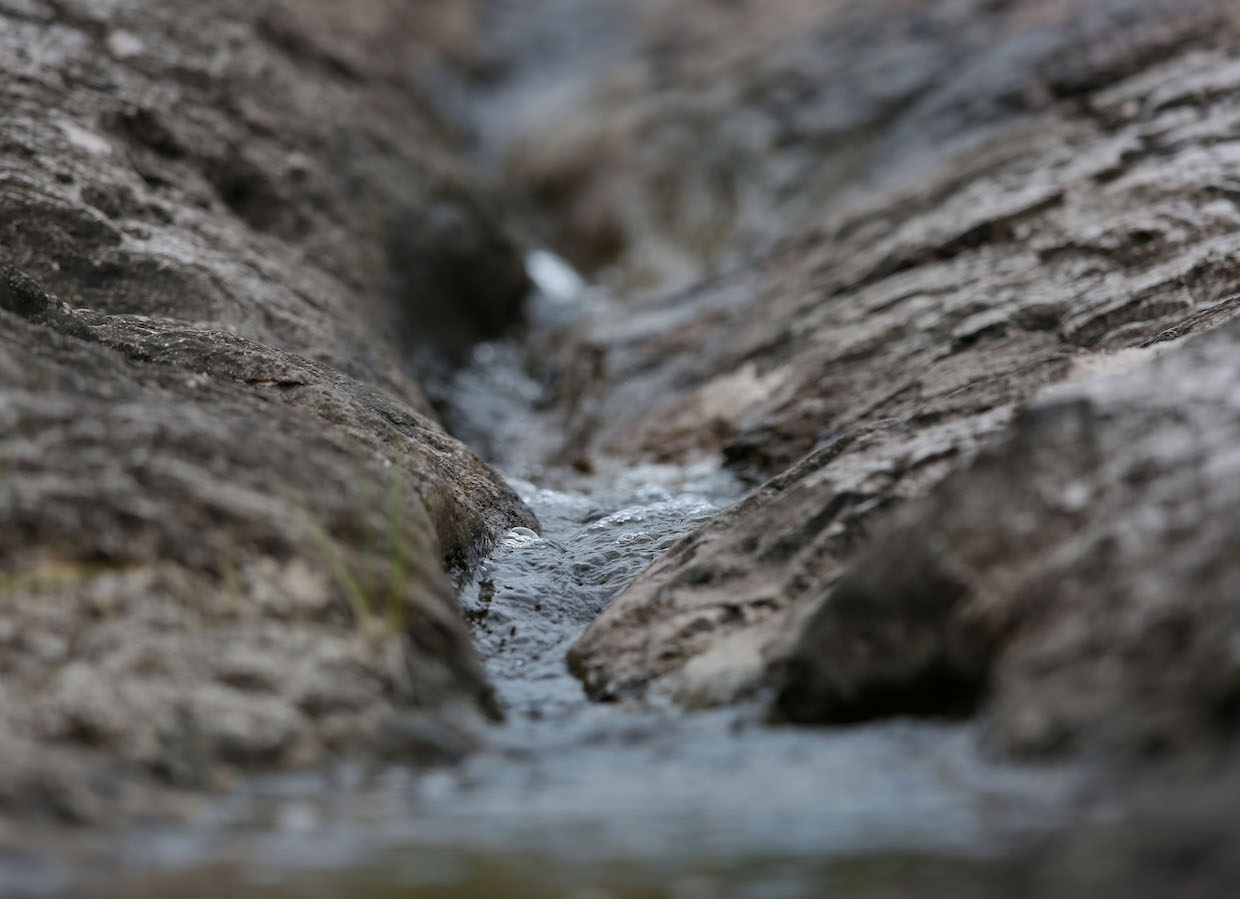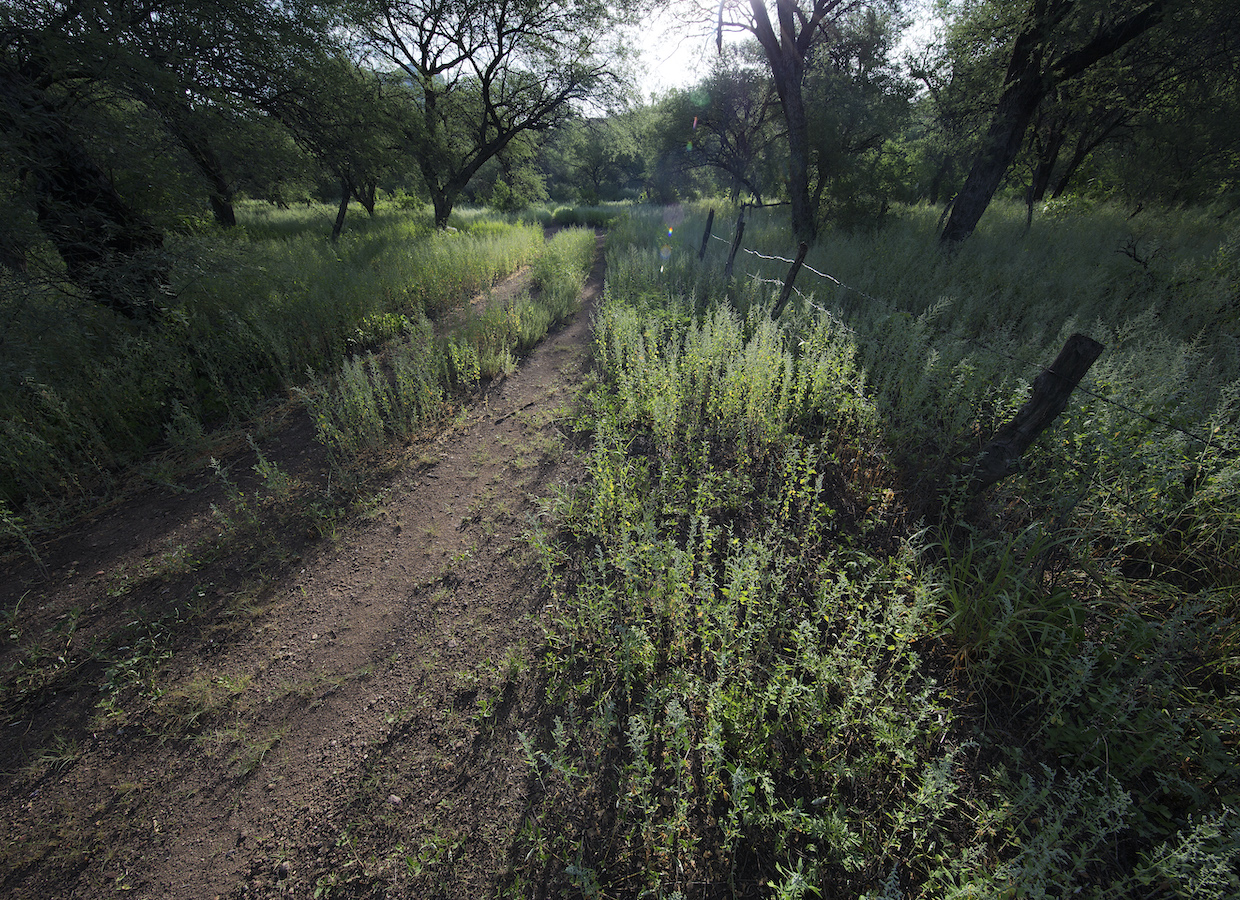
There are areas of the Northern Jaguar Reserve that need focused restoration treatments to improve habitat conditions, promote vegetation growth, and raise the water table. Cattle ranching once dominated this landscape and caused erosion, hydrological alterations, and vegetation loss, particularly among willows, sycamores, native grasses, and riparian thickets.
Our rehabilitation efforts show how providing a safe haven for jaguars takes many forms. We inventory completed restoration works on the reserve and Viviendo con Felinos ranches to create a catalog of areas, projects, and techniques, and to gain insights into the conservation benefits over time.
Buffelgrass Removal
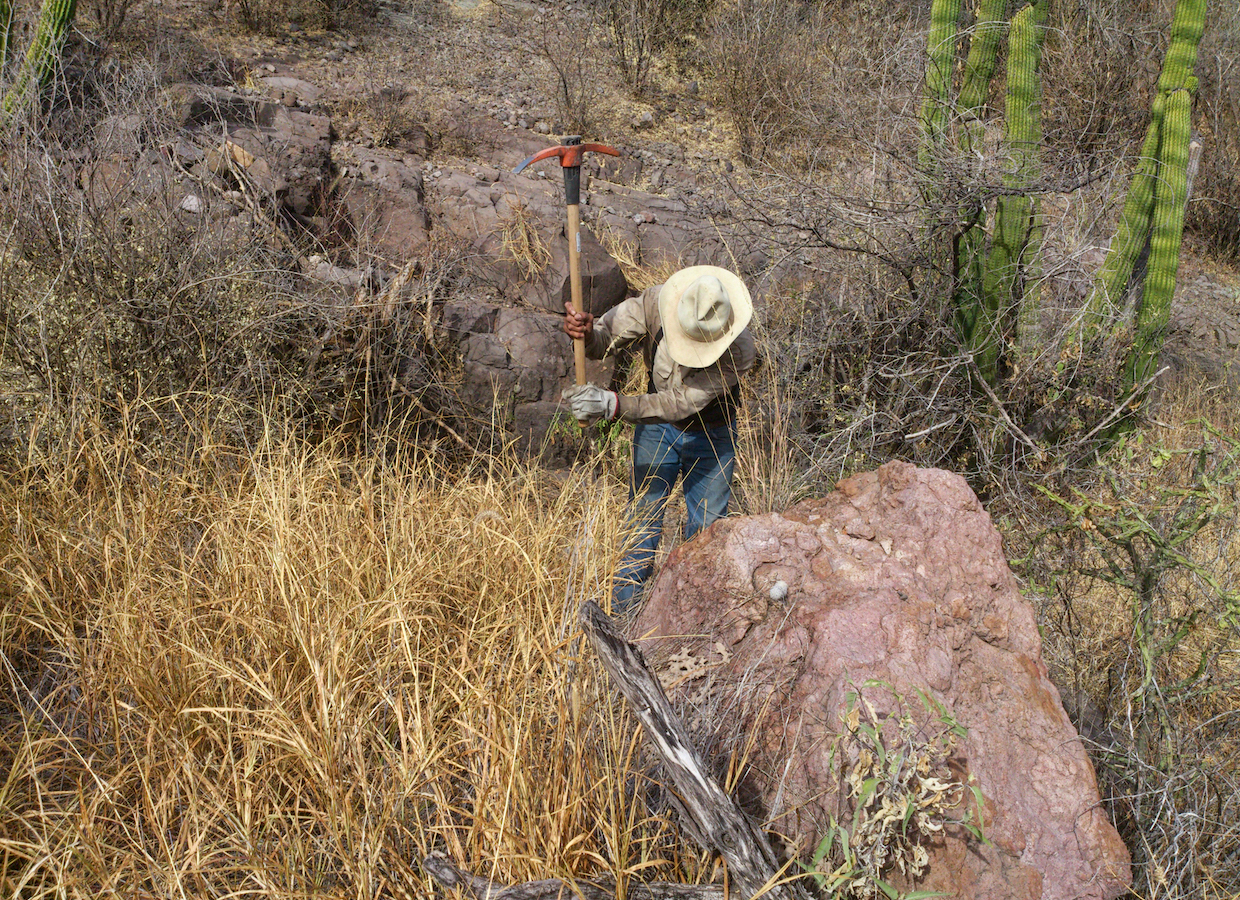
All non-native species have the potential to harm ecosystems, but the most detrimental on the reserve is buffelgrass. It is found in places that were cleared and planted, and along the roads. Buffelgrass chokes out native plants, competes for water and nutrients, depletes the soil, and creates a fire hazard. It is continuing to spread, although we believe more slowly since the removal of cattle.
We consulted with experts to plan buffelgrass removal using mechanical and chemical techniques that are well researched and widely used. We started in 2012 by concentrating on areas bordering the reserve’s roads and select drainages. We looked for locations where buffelgrass-free zones could serve as firebreaks and where control could be easily monitored.

Buffelgrass has diminished along the road following repeat treatments year after year, and we have expanded our removal effort to additional sites. Each clump of buffelgrass removed is a step in the right direction. We have seen small native plants emerge from under the carpet of buffelgrass, free at last. But there are still many years of work ahead.
Gabions
A technique to address water scarcity is the construction of gabions and other earthworks. Gabions are permeable rock micro-dams that slow stream flow, curb erosion, stabilize soils, and help re-vegetate habitat. We have built gabions on the reserve and neighboring Viviendo con Felinos ranches since 2011. We continue to add to the network of structures to help rehydrate the landscape.
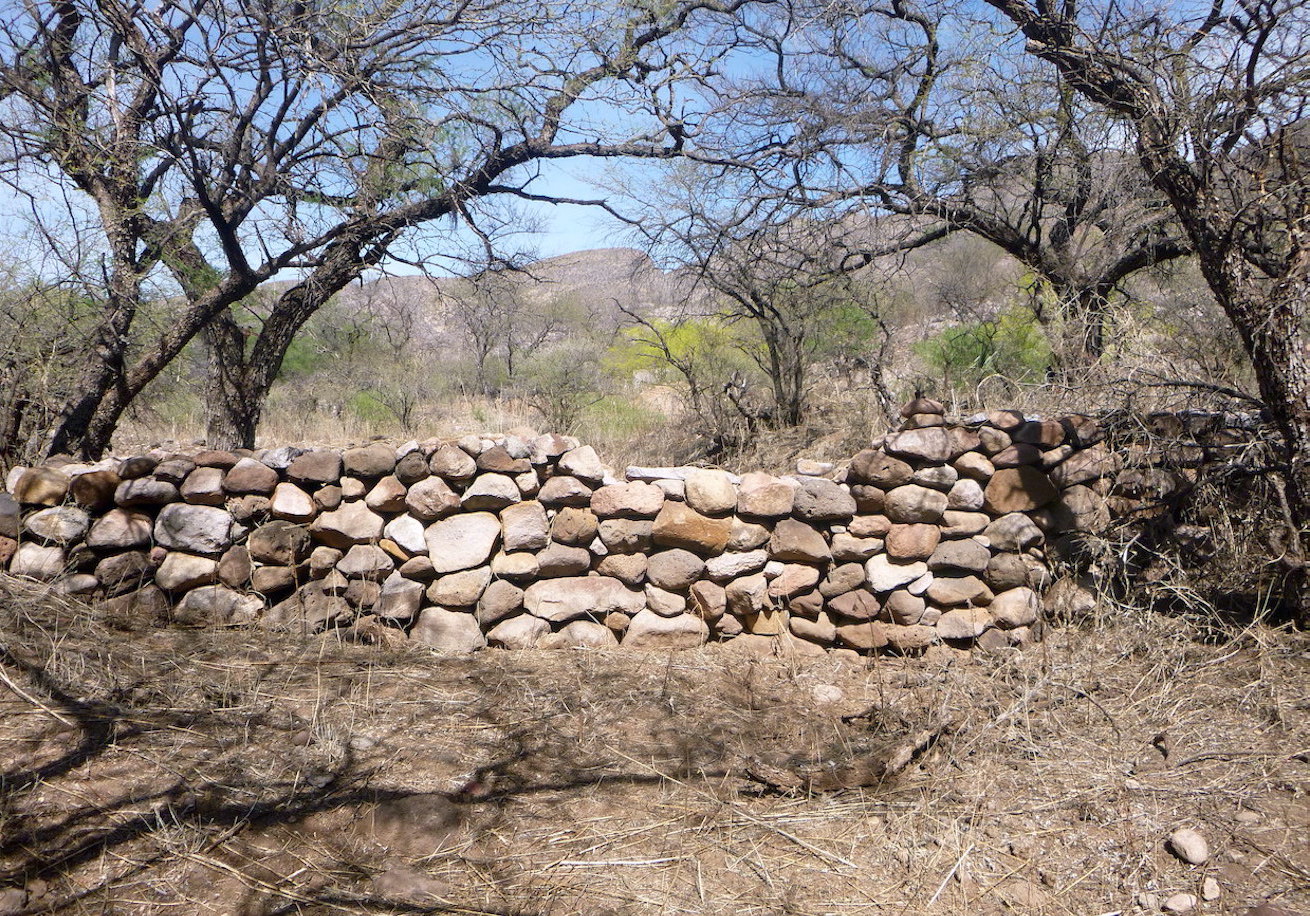
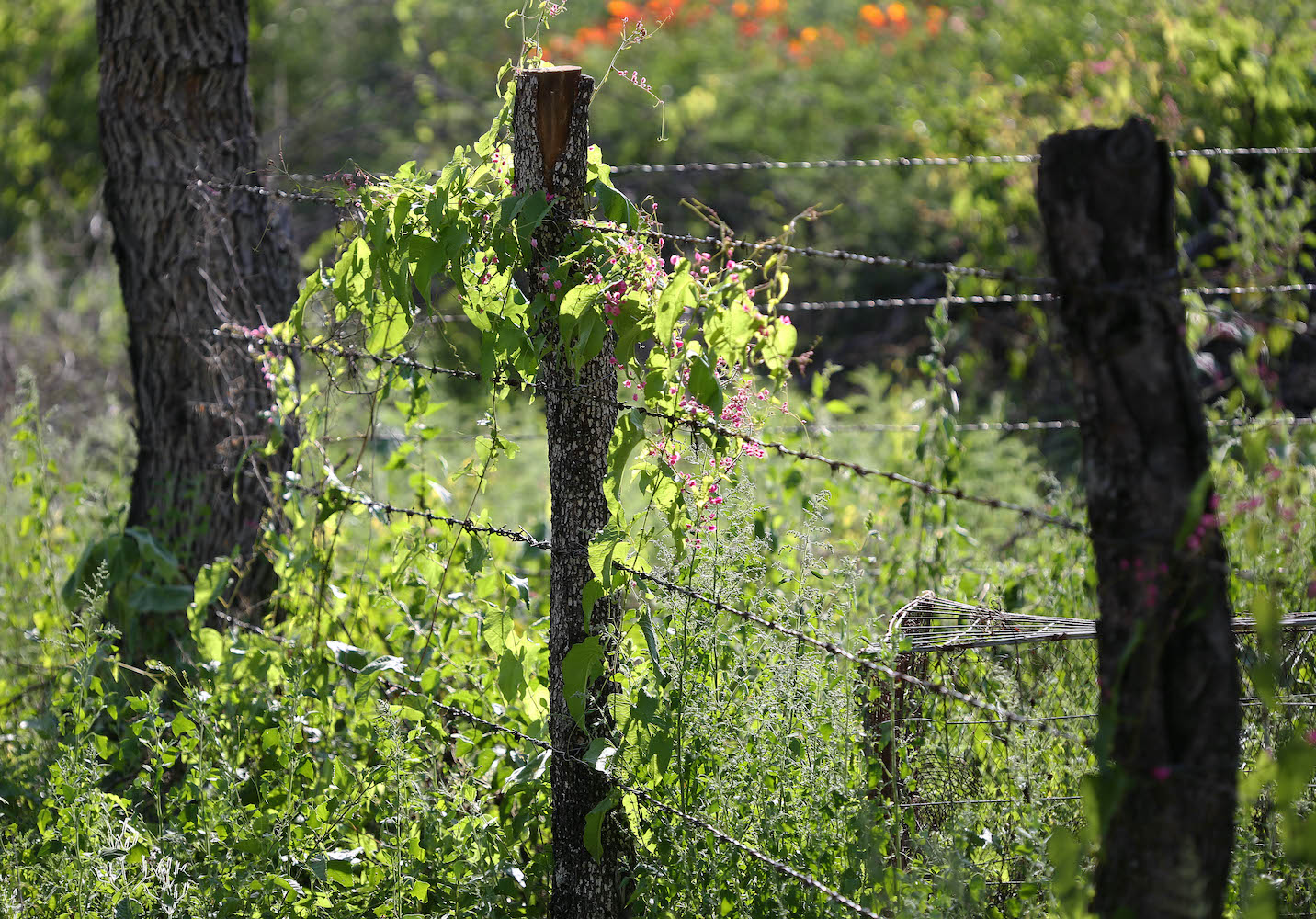
Fencing
Repairing broken fences is an ongoing project on the reserve. Our vaqueros regularly discover holes in perimeter sections, which have been weathered or made by trespassing cows. New fencing is usually needed when a ranch is purchased, and we have experimented with fencing on the Viviendo con Felinos ranches to exclude cows from sensitive riparian areas and facilitate plant growth.
Roadwork
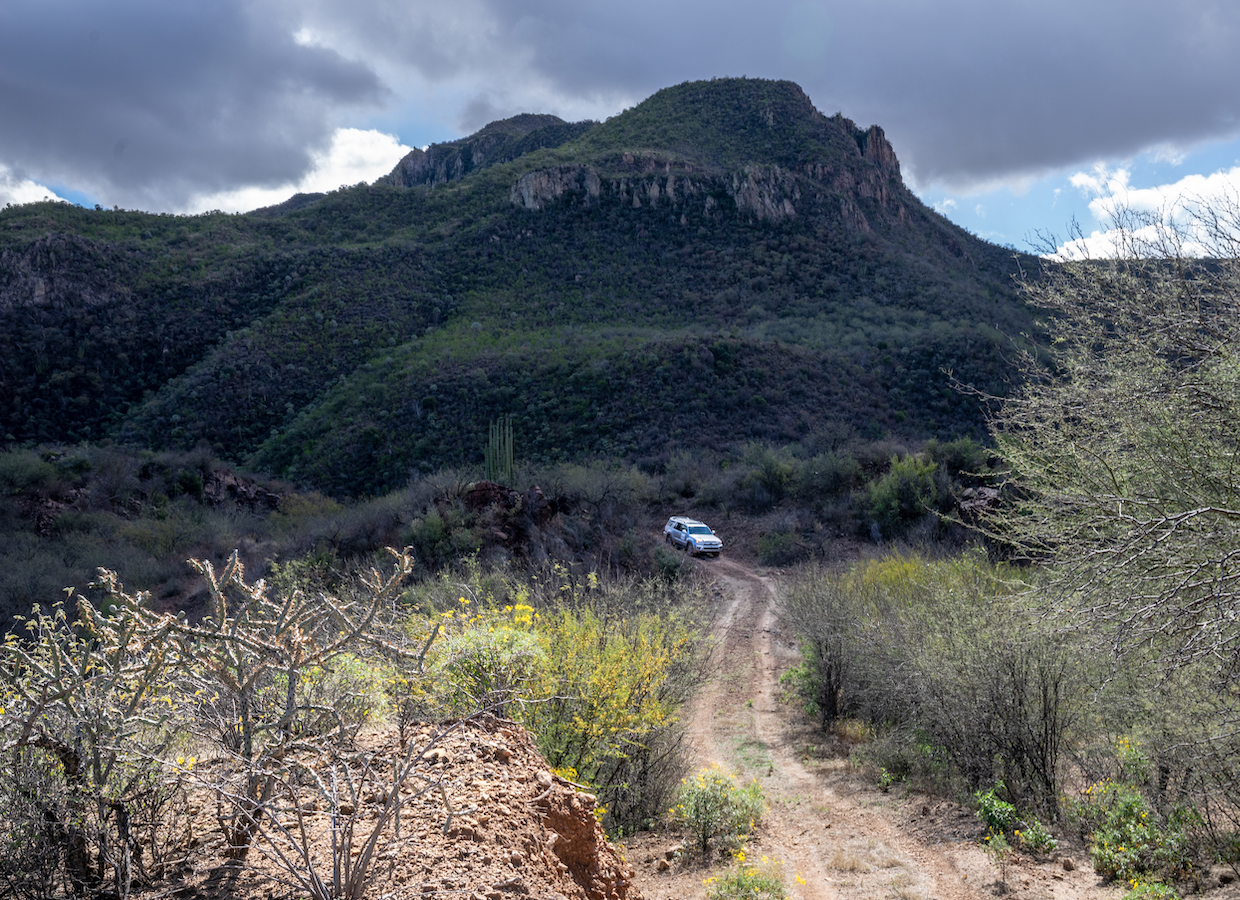
There are perpetual problems with water runoff and erosion along the main dirt road on the reserve and Viviendo con Felinos ranches. Because the road is accessible, it is ideal for ranchers to see improvements from conservation measures and build momentum for other restoration projects.
Steep grades can cause water to run rapidly down the road, which makes drainage difficult to control. We put in rolling dips to add contours and exits to direct water. We respond to an assortment of ongoing repair needs, such as undercuts that threaten to take out the road. When we remove outdated ranch buildings on the reserve, we repurpose the remains as fill to repair the road and minimize erosion.
Photos: Brendon Kahn, Omar Ore-Giron, Hilary Lex
